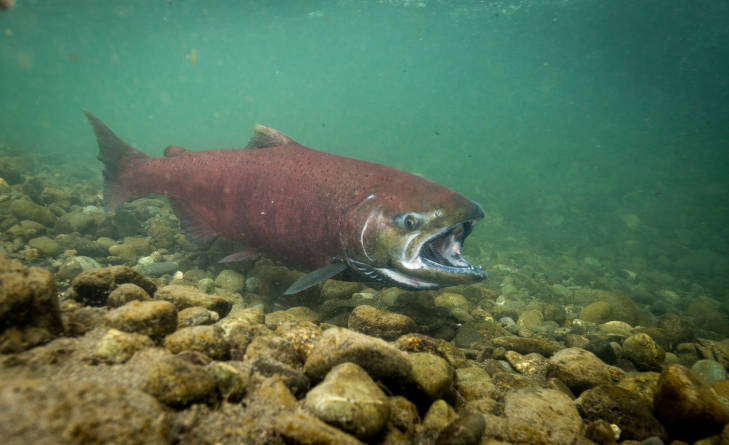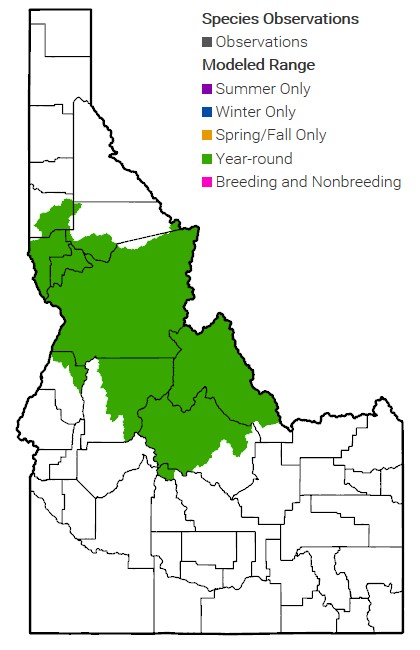ESA Status: Threatened – Designated Critical Habitat
The Snake River Evolutionarily Significant Unit (ESU) includes all naturally spawned spring and summer-run Chinook salmon (Oncorhynchus tshawytscha) originating from the mainstem Snake and Tucannon Rivers as well as the Grande Ronde, Imnaha, and Salmon River sub-basins and several artificial propagation programs. “Run” refers to the timing of adult Chinook salmon migration from the ocean to their natal freshwater. The Snake River was believed to be the Columbia River basins more productive Chinook salmon drainage by producing more than 40% of the spring and summer-run fish. The population has been declining since the late 1800s due to increased harvest rates, habitat deterioration, and construction of migration barriers.
The Snake River ESU was listed as Threatened on the Endangered Species Act (ESA) in 1992 by the National Marine Fisheries Service (NMFS). In 1999, the NMFS established Critical Habitat for the Snake River ESU in all river reaches accessible, both presently and historically, to spring and summer Chinook salmon excluding reaches above impassable natural falls.
A Recovery Plan was released for the spring and summer-run Chinook salmon Snake River ESU in 2017. The Recovery Plan notes improvements in naturally originating spring and summer-run Chinook salmon populations and habitats since the ESA listing. However, human activities causing the loss of primary spawning and rearing habitats continue to be main threats to the Snake River ESU. The most recent Five-Year Status Review of the Snake River ESU was completed in 2022 and determined the Threatened listing status remains appropriate.
Staff Contact:
More Information:
Species Profile for Chinook Salmon – U.S. Fish & Wildlife Service

Photo Credit: U.S. Fish & Wildlife Service

Map Credit: Idaho Department of Fish and Game
 Official Government Website
Official Government Website